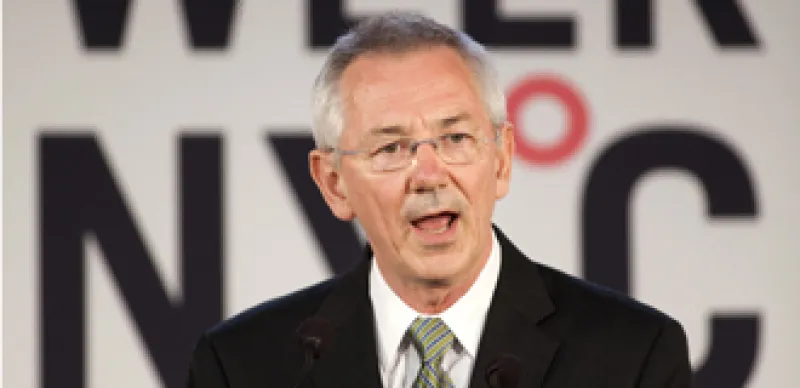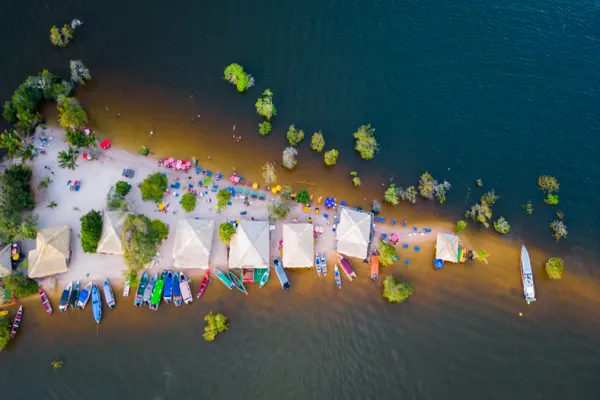Andrew Steer, the World Bank’s Special Envoy on Climate Change, believes “we can’t insure away the problem” of global climate change. But, he says, involvement from private and public investors willing to employ modern financial techniques can make all the difference. Steer left his post as Director General, Policy and Research at the UK Department of International Development (DFID), in London, and moved the family to the U.S. six months ago, after World Bank president Robert B. Zoellick created the new global position of Envoy.
We asked Steer, who also oversees the Climate Investment Fund (CIF), co-chairs the Strategic Climate Fund and helps mobilize climate financing through the Bank’s Sustainable Development Network, to tell us how the Bank chooses and funds its projects, and how the future looks.
Institutional Investor: Why is the World Bank involved in Climate Change?
Steer: The World Bank is dedicated to eliminating global poverty, so the economic hardship caused by climate change and extreme weather events is directly linked to our core mission.
How does the Bank execute that mission?
We ask our member countries to comment on three or four areas they’d like to work on over the next three to four years. Their answers, after our board reviews and votes on them, become the Bank’s Country Assistance Strategy.
Are you coming up against climate change skeptics?
During the last two years more than 80 percent, or 130 countries, asked us to make climate change one of the areas they want to work on. They’re saying climate change is important enough that ‘we want you to focus on that,’ when they could have chosen any number of other themes, such as education, health, industrial growth, economic reform.
We are thus working on both sides of the agenda: minimizing the degree of climate change by helping countries adopt low carbon growth patterns; and reducing the impact of the climate change. No matter what is said or done, some degree of damaging climate change is coming and will hurt developing countries. As an example of the scale of effort, we spent globally more than $5.5 billion on energy efficiency and renewable energy projects last year, an all time high, 62 percent more than the previous year.
How does the World Bank pay for all of that?
Through lots of different funding windows, including the private sector wing at the IFC [International Finance Corp, a member of the World Bank Group], which just created a new department with its director, Mohsen Khalil, focusing on private investment in climate change.
We also engage through our lending windows at the IBRD [the International Bank for Reconstruction and Development] for middle income countries and IDA [International Development Association] for low income countries, in addition to specific grant funds that we have. And we have the Carbon Markets Division, which manages the funds that private companies and governments give us in order to get offsets through the carbon markets.
The Climate Investment Funds (CIF) is the largest fund, at $6.3 billion. This is run in conjunction with the Regional Development Bank. It’s been in operation for the past two years, and is now operating in 43 countries, providing clean technology, and resources for adaptation and forestry. That allocation will lead to a total investment of $50 billion, as co-financing from the private sector, governments and carbon markets is catalyzed. The fund is implemented by us and the five regional development banks: the Asian, African, and Inter-American Development banks and the European Bank for Reconstruction and Development.
Is the carbon market program working well?
Yes and no. It’s not a good time for carbon markets, because the outlook is uncertain beyond 2012, when the first phase of the Kyoto Protocol expires. The global recession has depressed carbon prices over the last 18 months, and the market isn’t growing at the same rate. But the World Bank funds continue to perform well. We started the first prototype carbon fund ten years ago (five years before the Kyoto Protocol became operational), and have tried to be a market maker.
We now see our role as being an innovator, particularly in extending the reach of markets into lower income countries. Only 2 percent of global carbon flows go to Africa, but 20 percent of our funds do. We believe carbon markets have a big role in transferring technology and investments, and are lobbying to get a more efficient market system.
What’s been the effect of the U.S. failure to pass a carbon reduction law?
The more the U.S. is able to show leadership, the more the world as a whole will be encouraged to take action. The British government, for example, has passed a law requiring the government to reduce total national emissions by 80 percent by 2050, with an Independent Body specifying goals for the years in between.
What role can private investment play in the future efforts to help countries minimize, mitigate, and adapt to climate change?
Whether we succeed or fail will depend much less on the tens of billions of dollars of public funds and much more on the trillions of dollars of private investment. The private sector’s job is to seek returns for investors. It operates best when there are clear rules of the game. We’re very much hoping for a global agreement, which will enable the private sector to thrive in the context of climate change.
What we’re seeing are financial packages that bring concessional money and carbon markets together with private sector money.
We’re realizing some impressive investments while blending different sources of financing. For example, we’re putting together a major $5.6 billion program in Concentrated Solar Power (CSP) in North Africa, which brings together $750 million of concessional funds from the Clean Technology Fund (CTF), as well as other public and private money, to double the global installed capacity in CSP to date. Specifically, the CTF financing leverages $1.3 billion from the private sector, $2.8 billion from the Multilateral Development Banks and bilateral sources, and $740 million from public financing. The Investment Plan consists of nine solar energy plants (around 100MW) in Algeria, Egypt, Jordan, Morocco, and Tunisia, in addition to two transmission projects in Jordan and Tunisia.






